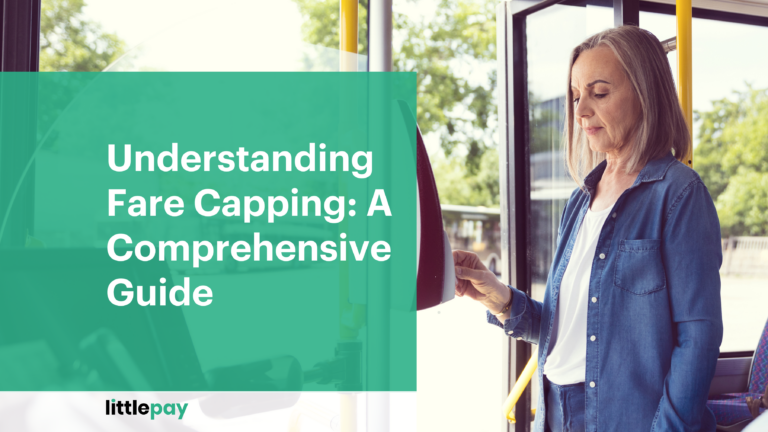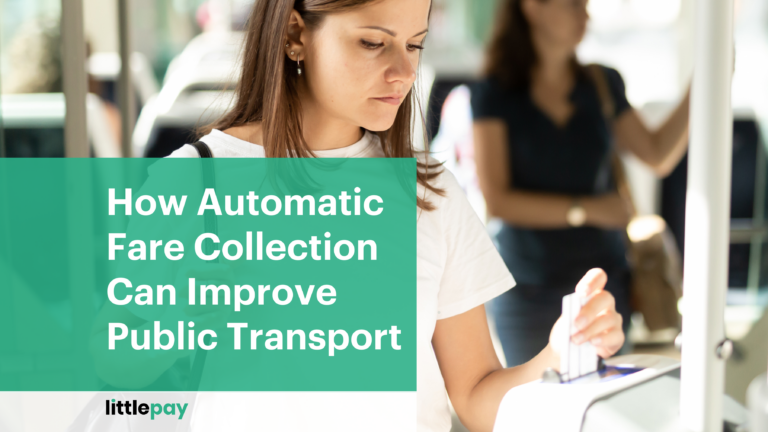
The Role of Account Based Ticketing (ABT) In Public Transportation Systems
Contactless payments are now an essential part of day-to-day life,

Public transport is an essential part of urban living, offering an affordable, reliable, and environmentally friendly way to navigate the city. However, regular travel can soon become costly if not regulated. That is why fare capping is designed to create a fair and transparent system that benefits transit agencies and passengers alike.
In this blog, we’ll take a closer look at the meaning of capping, how it works, and the many benefits that it can provide.
Fare capping is a pricing strategy employed by public transportation systems that limits the amount a passenger pays within a certain time period or location. Essentially, it sets a maximum fare that users can be charged, and once they reach this limit, any additional travel within the specified period is free. This is particularly useful for frequent travellers, who will know that they will never pay more than the predetermined amount no matter how many trips they take.
Transit agencies can choose how long this period will be, such as 24 hours, a week, or a longer duration. Whatever it might be, the primary goal is to make transit more affordable and to encourage more people to use public transportation.
Now that you know the meaning of capping, how exactly does it work? Fare capping utilises technology to track the fares that passengers have paid over the duration of the set period. Every time an individual taps in on their card or mobile device, the fare is recorded. Once that passenger has reached the predetermined fare cap, all subsequent trips within the eligible region are free for the remainder of the period.
No matter whether it’s train or bus capping, the process is managed via an electronic ticketing system that accurately tracks the usage of passengers. For riders, this automated system removes the burden of keeping track of spending, providing a seamless travel experience.
Although fare capping is not a new feature, in recent years, transit agencies have been able to integrate the solution with contactless payment methods. This integration makes the process even more convenient for riders, allowing them to simply tap in and out and their capped fare to be automatically calculated.

Fare capping can be implemented in various ways, depending on the transit agency’s goals and current infrastructure. Some of the most common types of train and bus capping include:
Daily capping
Daily capping sets the maximum fare a passenger will pay in a single day. Once the cap has been reached, any additional travel within that period is free. This encourages commuters and tourists alike to use public transport when traversing the city, giving them peace of mind that they will not be overcharged.
Weekly capping
Working in the same way as the daily cap, this option extends the period to seven days. This particularly benefits commuters, providing them with predictability and savings. Once they have reached their limit, additional travel on weekends and evenings is cost-free.
Multi-day capping
Multi-day capping extends over several days, such as a weekend or a specific event period. This is useful for tourists or during major events where frequent travel is required.
Time-based capping
This style of fare capping allows merchants to set up a timing rule that begins when a passenger taps in with their card. For example, with a 60-minute rule, all travel for the hour after the passenger initially taps in would be covered, no matter whether they travel by train, bus, or underground, as long as it’s operated by the same transit merchant.
Flat and variable fare
Fare capping can also be applied to both flat and variable fare systems. In a flat fare system, the cap is straightforward. However, in a variable fare system, the cap takes into account different rates for different routes or times.
Route capping
Route capping sets a fare limit based on specific transit routes. This is useful in systems where certain routes are significantly more expensive than others, ensuring equity across the network.
Zonal capping
This type of fare capping applies limits within specific geographic areas. It helps individuals manage costs across large metropolitan areas, ensuring they do not face excessive charges.
Trip limits
Trip limits cap the number of trips a passenger can be charged with within a certain period. Once they have reached this limit, all additional trains or buses will be free for the remaining duration.
Peak and off-peak times
Fare capping can differentiate between peak and off-peak times, setting higher caps during busy periods and lower caps during off-peak times. This is to encourage those who can travel outside the congested times, improving the efficiency of the system.
Multi-Operator Capping
Multi-operator capping allows fare capping to apply across different transit operators. This is particularly useful in regions with multiple transit providers, ensuring passengers do not face higher costs when switching between services.
There are many benefits to incorporating a fare capping system into your transit operations, with some of the most significant being:
One of the biggest benefits of fare capping is that it reduces the complexity of managing different fare types and prices. Transit agencies will be able to streamline their operations and reduce administrative burdens. This simplification also makes it easier to implement and manage fare changes.
Fare capping helps to attract more riders to the transport system through a transparent and predictable cost structure. When passengers know that their fare will not exceed a certain amount, they are more likely to opt for public transport over other methods. This increased ridership means higher revenue for agencies.
Fare capping helps to encourage travel during off-peak hours. This balances the demand on the transport system, leading to a more efficient use of resources. It also allows agencies to manage and allocate their services more effectively.
Fare capping ensures that all riders have access to fair and equitable pricing. By capping fares, transit agencies can promote social equity and inclusivity, making public transportation accessible to a broader population.
The technology used in fare capping systems provides valuable data on ridership patterns and behaviours. Transit agencies can use this data to make informed decisions about service improvements, route adjustments, and fare policy changes. This information can then be used to optimise the service to meet the needs of passengers.
Of course, when looking at the meaning of capping, it is not only beneficial for transport agencies. Frequent travellers, tourists, and commuters are all able to take advantage of fare capping, with some of the biggest benefits including:
Saving money is always a priority for travellers. Fare capping ensures passengers know they will not exceed a certain amount no matter how frequently they travel.
Fare capping also provides financial predictability. By knowing the exact amount they will spend on transport, travellers are able to better budget their finances.
A simplified and capped fare system reduces the confusion that can arise from different fare structures and pricing. Riders will not need to worry about calculating the cost of multiple trips, allowing them to travel with confidence.
Fare capping encourages travel during off-peak times, alleviating overcrowding and creating a more pleasant experience for riders.
By making public transport more accessible and affordable, it reduces the need for personal vehicles. This reduces congestion on the road and lowers passengers’ carbon footprints, boosting air quality in the city.
Fare capping promotes greater accessibility and equity in public transportation. By capping fares, transit systems can ensure that everyone, regardless of income, has access to affordable transportation options. This is particularly important for low-income riders who may rely heavily on public transportation for their daily commute, errands, and other essential activities.

Fare capping is a powerful tool for modern public transportation systems. It enhances fairness, predictability, and efficiency, benefiting both transit agencies and riders. By understanding the various types available and their benefits, cities can create a more equitable and user-friendly transit system.
As urban areas continue to grow, fare capping will play a crucial role in making public transportation more appealing and sustainable for everyone. For transit agencies, fare capping simplifies fare management, increases ridership, enhances efficiency, ensures fair pricing, and provides valuable data for decision-making. For riders, it offers significant cost savings, predictable expenses, a simplified fare system, improved travel experiences, and greater accessibility and equity.
Want to learn more about fare capping and how to implement it in your transit system? Contact our Littlepay team who will be happy to help!

Contactless payments are now an essential part of day-to-day life,

Public transport operators are constantly looking for ways to improve

Creating a smooth, hassle-free, and efficient public transit experience is

In this digital-led world, contactless payments are a popular choice